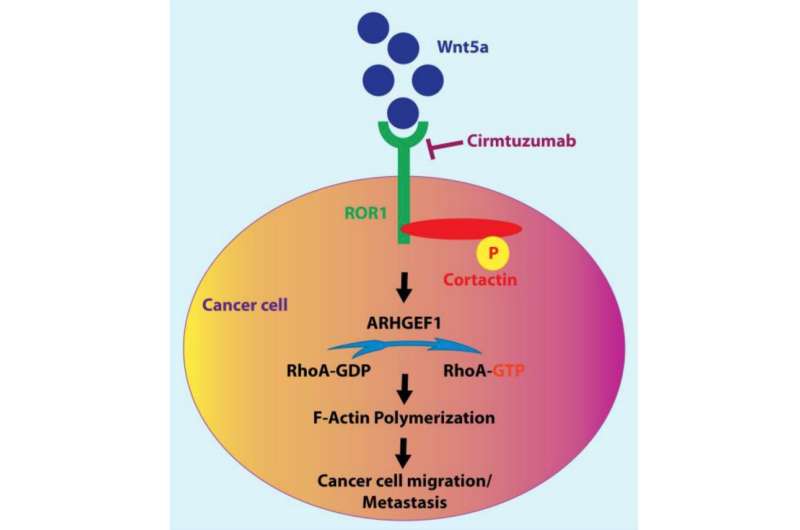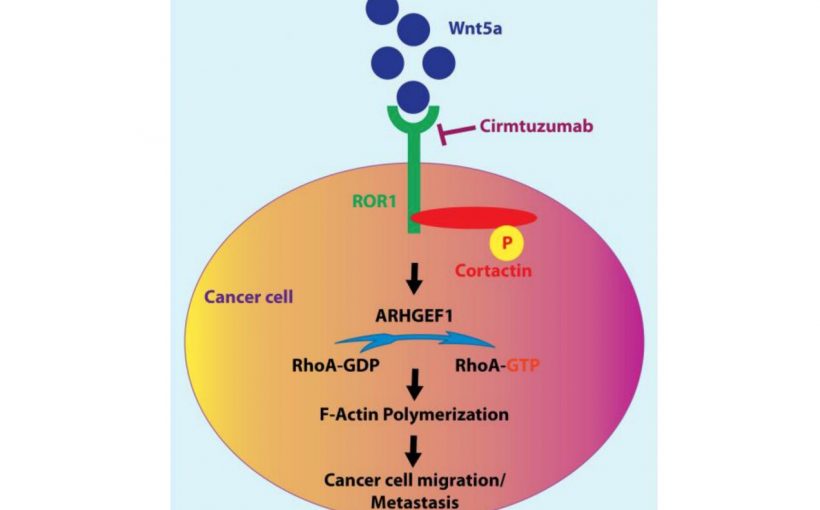
A new editorial paper titled ” Impact of cortactin in cancer progression on Wnt5a/ROR1 signaling pathway” has been published in Oncotarget.
In this editorial, researchers Kamrul Hasan and Thomas J. Kipps from the University of California discuss cortactin—an intracellular cytoskeletal protein that can undergo tyrosine phosphorylation upon external stimulation and promote polymerization and the assembly of the actin filament that is required for cell migration. Upon stimulation, cortactin binds and activates actin-related protein Arp2/3 complex, a de novo actin nucleator that can induce F (filamentous)-actin polymerization.
Cortactin (also known as EMS1 or CTTN) is expressed broadly in a variety of cancers, for which it plays an apparent role in cellular protrusions, which include lamellipodia and filopodia formation to promote migration and metastasis. Moreover, cortactin is expressed in (i) primary chronic lymphocytic leukemia (CLL) and primary breast-cancer cells, (ii) at least 15% of metastatic breast carcinomas, and (iii) CLL or breast cancer cell lines. In structure, cortactin contains a SH3 domain that allows it to bind characteristic motifs (-P-X-X-P-), which can be found in the proline-rich-domains (PRD) of other proteins, including receptor-tyrosine-kinase-like orphan receptor 1 (ROR1).
“We have found (as have other investigators) that ROR1 is expressed by a variety of human cancers, which include CLL and breast cancer, suggesting that ROR1 may play a role in cancer pathogenesis,” conclude the researchers.
More information:
Kamrul Hasan et al, Impact of cortactin in cancer progression on Wnt5a/ROR1 signaling pathway, Oncotarget (2023). DOI: 10.18632/oncotarget.28386
Journal information:
Oncotarget
Source: Read Full Article
